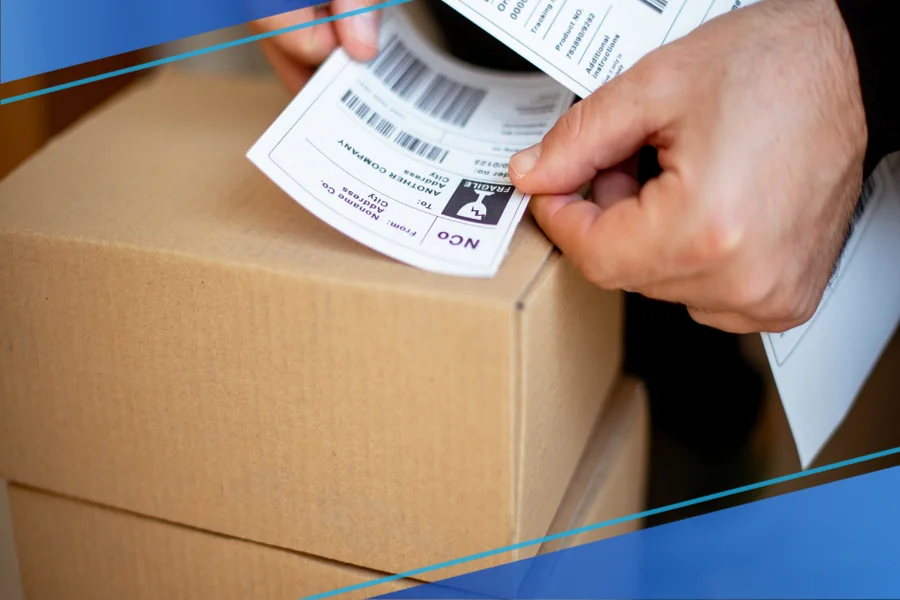When it comes to shipping packages through rough handling, wet weather, or dusty warehouses, your average label just won’t cut it. If you’ve ever received a box with a half-torn label or an unreadable barcode, you already know how essential a durable shipping label can be. For businesses relying on reliable logistics, choosing the right 4×6 label can mean the difference between on-time delivery and costly returns.
This article dives into what makes a 4×6 shipping label extra-strong, how to match the right label with your shipping environment, and what to look for when shopping for rugged thermal labels that can survive anything your supply chain throws at them.
1. Why Standard Labels Fail Under Pressure
Most standard shipping labels are designed for short-term use in controlled conditions. But the real world isn’t always so kind. Here are the most common reasons regular labels fail:
- Weak adhesive: Can’t bond well to corrugated or textured surfaces, especially recycled or rough cardboard.
- Tearing or peeling: Thin labels rip or curl when exposed to friction or water.
- Fading text: Cheap thermal materials lose their print when exposed to sunlight or moisture.
- Poor barcode readability: Smudged, faded, or wrinkled labels result in failed scans and missed deliveries.
For industries like eCommerce, warehousing, or freight logistics, these failures translate directly into delays and lost money.
2. Key Features of Extra-Strong 4×6 Shipping Labels
What separates an “extra-strong” shipping label from the rest? Look for these critical features:
a. High-Tack Adhesive
The label should bond instantly and firmly to even rough, uneven, or dusty surfaces. Industrial-strength adhesives are engineered to resist peeling under heat, cold, or moisture.
b. Durable Label Face Material
Choose thicker labels made from premium direct thermal paper or synthetics. Polypropylene or polyester options offer additional durability and tear resistance.
c. Smudge-Proof and Fade-Resistant Printing
For thermal labels, the coating must withstand scratches and scuffs from sorting belts or manual handling. Water- and UV-resistance is key for outdoor or long-distance shipping. If you are still worried, our labels can be wrapped with tape, and the writing will not fade.
d. Compatibility With Popular Printers
Ensure your label rolls work seamlessly with Zebra, Rollo, Brother, or Dymo printers. Strong labels are only useful if you can print them efficiently.
e. Permanent Adhesion Time
Labels that require time to set may fall off before they fully bond. Extra-strong labels adhere within seconds and stay put.
3. Label Use Cases That Demand Extra Strength
Some shipping environments are more punishing than others. If your business deals with any of the following, you need extra-strong labels:
- Heavy-duty shipping cartons: Rough cardboard requires aggressive adhesives.
- Cold chain logistics: Freezers, refrigeration, or icy conditions need labels that won’t peel.
- Warehouses with dust or oil: Dusty or greasy surfaces often cause standard labels to fail.
- Outdoor or cross-border transit: Exposure to rain, wind, or sun demands more resilient materials.
- Long-term inventory labeling: Items stored for months or years need labels that won’t fade.
4. Tips for Maximizing Label Adhesion on Tough Surfaces
Even the strongest label won’t perform well if applied incorrectly. Follow these tips:
- Clean the surface first: Remove dust, oil, or condensation with a dry cloth.
- Apply firmly: Use a roller or press down hard to maximize contact. tabasquishytoys.com
- Avoid applying in extreme temperatures: Labels apply best between 50°F and 90°F.
- Use label dispensers: They help reduce wrinkling and ensure consistent application.
5. Common Mistakes to Avoid
- Using labels not rated for your environment: Office-grade labels won’t survive cold trucks or rainy docks.
- Misjudging adhesive strength: “General purpose” labels may peel during shipment.
- Ignoring printer compatibility: Even a strong label roll can jam a mismatched printer.
6. Betckey Extra-Strong 4×6 Labels: Built to Endure
If you’re looking for a thermal label that checks all the boxes above, Betckey offers high-performance 4×6 direct thermal labels designed specifically for rough boxes and challenging shipping conditions.
Why Choose Betckey?
- Super-strong adhesive that works on recycled, rough, and corrugated cardboard
- Fade- and water-resistant direct thermal face material
- Compatible with Zebra, Rollo, Brother, and other major thermal printers
- No need for ink or toner, perfect for bulk eCommerce use
- Fast U.S. shipping and excellent customer support
With Betckey, you can ensure your labels stay on from warehouse to doorstep.
Conclusion
Not all shipping labels are created equal. If your packages face extreme conditions, you need labels that are as tough as the supply chain demands. Whether it’s cold, wet, dusty, or rough, extra-strong 4×6 thermal labels will keep your operations running smoothly. Betckey delivers that reliability at a competitive price point—no more worrying about lost shipments or unreadable barcodes.
FAQs
Q1: Can I use regular 4×6 shipping labels on rough cardboard boxes?
You can, but it’s risky. Standard labels may not stick well or might peel off during transit. For rough boxes, always choose labels with high-tack adhesive.
Q2: Are waterproof 4×6 thermal labels really necessary?
If your packages are exposed to rain, condensation, or refrigerated conditions, waterproof or water-resistant labels help maintain barcode readability and adhesion.
Q3: Do Betckey extra-strong labels require special printers?
No. Betckey labels are compatible with most popular direct thermal printers, including Zebra, Rollo, and Brother models.



